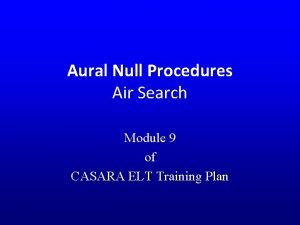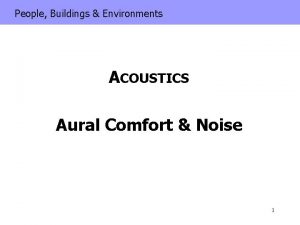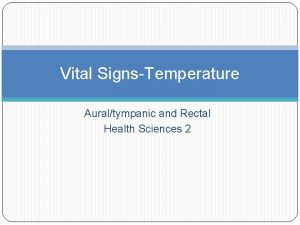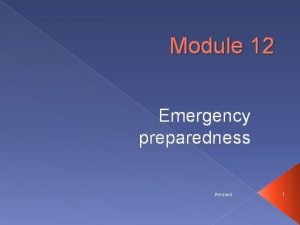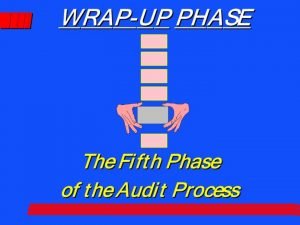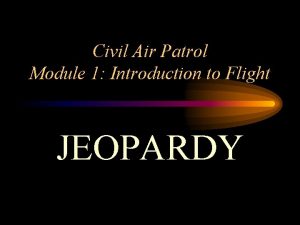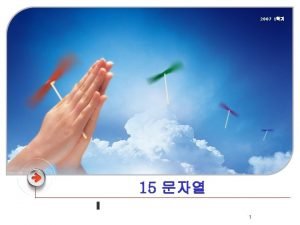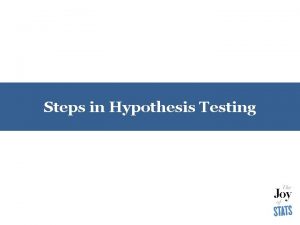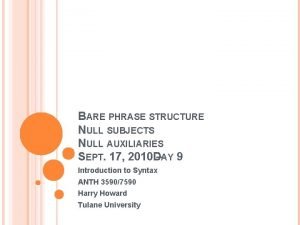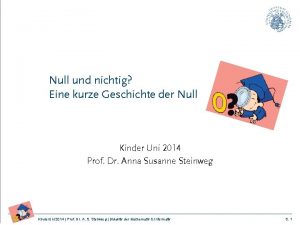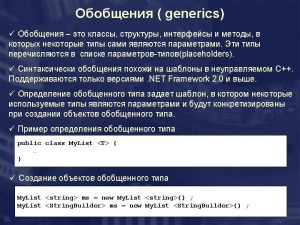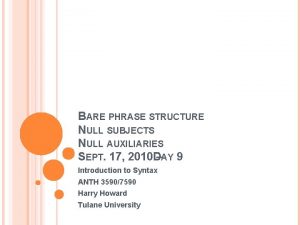Aural Null Procedures Air Search Module 9 of


















- Slides: 18

Aural Null Procedures Air Search Module 9 of CASARA ELT Training Plan

Aural Null Using aircraft communications radio

Aural Null Procedure A Procedure B

AURAL NULL PROCEDURE • In the event that your homer is not working, you must know Aural Null methods, “A”, and “B”. • The only equipment you need is: • • VHF receiver clock map pen

Signal Reception Beware of a difference of signal reception on the nose of the search aircraft, as compared to the signal off of the tail. Signal strength may vary enough between the two so as to make the results inaccurate. If this occurs it is recommended that readings be taken off of the nose. It will mean flying out of the signal, then making a 180 degree turn and coming back on the same track. When flying back towards the signal, take your readings once the signal is heard again. Signal Faded Signal Detected

When signal detected: • Descend to minimum reception altitude. • Disable squelch if possible and adjust radio volume to minimum reception.

When signal detected: AURAL NULL PROCEDURE “A” • Fly a constant heading and draw a track made good on the map. • Pinpoint your position on map. • Once signal is lost, do a 180º turn and mark the spot (A) where the signal is acquired again. • Maintain constant altitude and volume setting at all times.

When signal fades out • Fly along the same track and pinpoint position of fade out (B), do another 180º. • Calculate mid-point of track made good (C). • From this mid-point plot at 90 degrees, a new desired track which extends on both sides of track made good. • Return to mid point and fly either direction to make good, the new track.

When signal fades out • When signal strength fades out, plot this point on your map (D) – Reverse course, signal will build and then fade. Plot point at which signal fades (E)

ELT Location • In theory, the ELT should be located at the mid point of the second track • Terrain, obstructions and aircraft wreckage can skew the points and make finding the ELT more difficult.

Fly to Calculated Halfway pt. turn left or right and fly until signal fade DFly Signal Make Signal Mark track 180 faded Position Detected until deg turn signal fade B Calculated ELT Location Draw Track line Make Signal Mark 180 Detected Position Faded deg turn Calculate Halfway pt. Mark Calculated Halfway pt. st track line Draw Track line 90 deg to 1 C Signal Detected Signal Make Signal Mark 180 Detected Position faded deg turn A E Mark Fly. Position to Calculated Halfway pt. And heading

Are there any questions?

AURAL NULL PROCEDURE “B” • This method has both an advantage, and disadvantage: – ADVANTAGE: It is faster than Procedure “A” – DISADVANTAGE: It requires sufficient cockpit space to adequately plot the information • Requires: – VHF receiver - pen - dividers – map - ruler - 900 triangle

AURAL NULL PROCEDURE “B • Position of the aircraft is plotted as soon as the signal is heard • Continue on same heading for a short distance • Turn 900 either left or right, and proceed until the signal fades. Note this position • Turn aircraft 1800 and again plot where the signal is heard, and where it fades

AURAL NULL PROCEDURE “B • Approximate position of ELT is plotted by: – drawing chord lines between each set of “signal heard” and “signal fades” positions – Drawing perpendicular bisectors of each chord • Aircraft proceeds to the point where the perpendicular bisectors intersect. • The ELT should be there

Are there any questions?

That’s All For Now Have a pleasant flight!

CAS ARA “THAT OTHERS MAY LIVE” THANK YOU
 Aural null direction finder
Aural null direction finder Air higroskopis air kapiler dan air gravitasi
Air higroskopis air kapiler dan air gravitasi Aural comfort
Aural comfort What is media and information languages
What is media and information languages Nature of listening
Nature of listening Plenitud aural definicion
Plenitud aural definicion Imagery sinners in the hands of an angry god
Imagery sinners in the hands of an angry god Rectal temperature contraindications
Rectal temperature contraindications Tubérculo de darwin
Tubérculo de darwin Vark stands for
Vark stands for Parenteral route definition
Parenteral route definition Module 12 emergency procedures
Module 12 emergency procedures Search for unrecorded liabilities audit procedures
Search for unrecorded liabilities audit procedures Vehicle search techniques
Vehicle search techniques C device module module 1
C device module module 1 Civil air patrol aerospace module 1
Civil air patrol aerospace module 1 Uninformed search methods
Uninformed search methods Federated search vs discovery
Federated search vs discovery Local search vs global search
Local search vs global search
